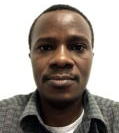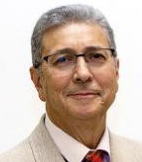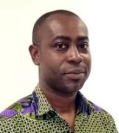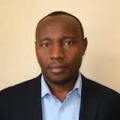TIME
(in EAST AFRICAN TIME ZONE)
ZOOM LINK |
Speaker
|
Title
|
Abstract (in brief)
|
TIME:
12:00-12:15
 |

Dr. Hideki Kambara, Emeritus Fellow , HItachi Central Lab. Japan |
Opening speech.
AIBBC Past, Present and Future. |
Welcome message from the horonary chair of AIBBC. |
TIME:
12:15-12:40
 |

Prof. Ulf Landegren
Uppsala Univ., Sweden |
Molecular tools for affinity-based protein analyses |
Analyses of proteins in tissues and body fluids provide dynamic information
about states of health. Our lab is developing and applying methods where
DNA-conjugated antibodies are used in proximity ligation reactions for
large-scale protein analyses, using minimal aliquots of samples such as
plasma from blood draws, dried blood spots collected on paper, or lysates
of fine needle biopsies of tissues of interest, or even of single cells.
|
TIME:
12:40-13:05
 |

Prof. Tatsuro Irimura
Juntendo University, School of Med., Japan |
Glycosylation regulates infection of enveloped virus |
A few reports on genome-wide search for mutations of genes associated with aggravation of COVID-19 revealed that one of few involved genes turned out to be a glycosyltransferase which determines blood group ABO antigens. How could glycans determine susceptibility to viral infection? We previously reported that glycosylation of the envelope spike glycoprotein of Ebola virus is a critical determinant of its infectivity through the interaction with a C-type lectin (carbohydrate binding protein) expressed on the surface of macrophages and dendritic cells. Because the spike glycoprotein of SARS-CoV-2 is also highly glycosylated and potentially contains a variety of glycans, there are possible mechanisms by glycans and glycan-recognition molecules play key roles in the initiation and the aggravation of COVID-19. (Fujihira et al, Sci Rep, 8: 5495, 2018) |
TIME:
13:05-13:30
 |

Dr. Elijah Kolawole OLADIPO
Adeleke University,
Osun State, Nigeria |
Exploring Surface Glycoprotein to Design Multi-Epitope Vaccine against COVID-19 |
Immunoinformatics approach to vaccine design which takes advantage of antigenic and non-allergenic epitopes present on the spike glycoprotein of SARS-CoV-2 to illicit immune responses was employed in this study. Result obtained indicated that this novel vaccine candidate is non-toxic, capable of initiating immunogenic response and will not induce allergic reaction. Finally, the immune simulation study revealed the effective performances as well as stability of the vaccine protein. At this point the vaccine awaits animal trial to validate its efficacy and safety for use in the prevention of the novel COVID-19 infections. |
TIME:
13:30-13:55
 |

Dr. Joe K. Mutungi
Univ. of Ghana, Ghana |
Molecular and serological epidemiology of covid-19 in Ghana |
Here we will report on whole genome sequences of 46 isolates of the SARS-CoV-2 virus (the cause of COVID-19) obtained in Ghana; 15 from the early phase (March 12-April1 2020) and 31 from a later phase (May 25 - May 27 2020). To estimate the COVID-19 burden in the population, we have also carried out a seroprevalence survey of anti-SARS-CoV-2 IgM and IgG antibodies at multiple sites in the Greater Accra Region of Ghana between 1 August and September 30, 2020. We will report on the findings of this study too. |
TIME:
13:55-14:20
 |

Dr. Yuki Furuse
Kyoto University, Japan |
Viruses that Can and Cannot Coexist with Humans and the Future of SARS-CoV-2 |
As a person from the field of not biotechnology but public health, I will discuss in this talk how past and present human viruses emerged, spread, and persisted or disappeared after zoonotic introduction. These aspects of viral disease may provide clues for the future path that SARS-CoV-2 might take in relation to human infection. |
TIME:
14:20-14:45
 |

Prof. Guido Poli
Vita-Salute San Raffaele University, Italy |
A Tale of Two Pandemics. HIV vs. SARS-CoV-2
|
The Human Immunodeficiency Virus (HIV), which emerged in the early ‘80s,
has infected 38 million people worldwide, killing at least 25 millions,
mostly in the pre-therapy era, and continues to spread in all countries.
On the other hand, human coronaviruses were not considered a serious threat to human health until the insurgence of the severe acute respiratory syndrome (SARS) in China in late 2002. Then, ra third coronavirus, related to the causative agent of SARS and called SARS-CoV-2, has emerged in late 2019 in China and infected almost 38 million people (killing more than a million) in ongoing 2020. Both HIV and SARS-CoV-2 are RNA viruses, however, with very distinct molecular
features and target cells that illustrate their different impact on human
health. Their main distinctive features will be discussed. |
TIME:
14:45-15:10
 |

Dr. Kwadwo A. Kusi
University of Ghana, Ghana |
The role of T cells in COVID-19 |
Life-threatening disease etiology from SARS-CoV-2 relates to the development of symptoms as a result of the induction of a cytokine storm that causes the observed lung pathology. Antibody responses and B cell memory are thought to be relatively short-lived and correlate strongly with disease severity and recovery. T cell responses are however believed to be more robust and many of the current vaccine development efforts aim at inducing cellular responses. I will present a broad overview of the current knowledge of T cell immunity against COVID-19, including the potential for T cell response cross-reactivity between SARS-CoV-2 and other human Corona Viruses. |
TIME:
15:10-15:35
 |

Prof. Yutaka Suzuki
The University of Tokyo, Japan |
Liberating the sequencing power to address the real world questions |
Very recently, a further new type sequence has been developed. MinION is
a disposable sequencer, by which the sequencing is possible without any
pre-installation of expensive sequencers or any specific skills in biological
experiments. Even electric supply is not required, MinION connected to
a laptop PC. These features of MinION have opened a new opportunity of
the sequencing analysis in developing countries, even in their field areas,
where high initial investment is not always affordable. Indeed, the DNA
sequencing has been performed in jungles, high mountains, anti-Arctic and
finally in the Space Station. The DNA sequencing technology is now bringing
various new challenges for researchers truly worldwide. The target covers
humans, wild animals to environmental microbes, including pathogens of
infectious diseases. |
TIME:
15:35-16:00
 |

Prof. Masood K.-Moghaddam
Uppsala Univ. SWEDEN |
Advanced Molecular Tools for Detection and Characterization of Exosomes |
DNA-assisted proximity assays are powerful and versatile tools for sensitive,
precision and high throughput detection of macromolecules such as DNA,
RNA and proteins as well as posttranslational modifications in in situ
and in liquid biopsies. We have developed a large number of affinity-based
proximity assays for single- and multiplex detection of large complexes.
Several of these technologies, such as proximity ligation assay (PLA) combined
with flow cytometry readout, multiplex proximity extension assays (PEA),
proximity barcoding assays (PBA) and padlock technology are used for sensitive
detection and characterization of individual exosomes and viruses. |
TIME:
16:00-16:25
 |

Prof. Masahiro Takei
Chiba Univ., Japan |
Possibility of Parasite Detection in Body & Blood by
Electrical Impedance Tomography and Electrical Impedance Spectroscopy |
This presentation therefore provides an insight into the morphological
and dielectrical property changes of RBC and blood system through the various
parasite infection stages or response to drugs and how they can be used
for parasite detection especially during novel drug assays. Dielectrical
measurements are envisioned to replace the use of radiolabelled agents
such as radiolabelled hypoxanthine to improve human safety during blood
parasite detection and novel drugs assays |
TIME:
16:25-16:50
 |

Prof. Darius Rackus
ETH Zurich,Switzerland & Ryerson University, Canada |
Digital microfluidics for point-of-care testing |
Digital microfluidics (DMF) is a liquid handling technique that manipulates
discrete droplets on the nano to microliter range on an insulated array
of electrodes using electrostatic forces. This talk will discuss some of
the challenges and solutions for translating this technology from the research
laboratory to the field. Examples of electrochemical sensor integration,
immunoassay development, and low-cost and portable fabrication techniques
will be included. A summary of the first field deployment of a DMF immunoassay
system, which was conducted in Kakuma Refugee Camp, Kenya, will be presented. |
TIME:
16:50-17:15
 |

Dr. Jesse Gitaka
Mount Kenya University, Kenya |
Enhancing
the utility of RT-LAMP for COVID 19 Point of Care Diagnosis |
Molecular point of care diagnostics such as reverse transcription Loop
amplification that do not need thermo-cycling have great potential. Nonetheless,
with most protocols, these require nucleic acid extraction as well as need
for cold chain for reagents. We shall explore a number of strategies to
enhance utility of these tests at the point of care. We shall share the
Immiscible Filtration Assisted by Surface Tension (IFAST) strategy that
is showing very promising results in enabling RNA extraction, isothermal
amplification and visualisation in a single lab-on-a-chip device. |
TIME:
17:15-17:40
 |

Dr. Sara Suliman
Brigham and Women’s Hospital, Harvard Medical School, USA |
Standardized evaluation of serological lateral flow assays |
To date, we evaluated 17 serological lateral flow assays (LFAs) on 112
plasma samples: 56 pre-epidemic SARS-CoV2 negative samples (including 10
HIV-positive), and 56 SARS-CoV2-positive samples, confirmed by gold-standard
PCR tests. We published an online tool that calculates the positive predictive
values given the test accuracy and prevalence in the population. The goal
is to provide an accessible tool for end users to interpret the results
of COVID tests. |
TIME:
17:40-18:05
 |

Dr. El-ad David
CEO, Astrolabe Diagnostics, USA |
The challenges of analyzing high-complexity cytometry data |
The past decade has seen the introduction of new instruments that allow routine acquisition of panels with 30 markers or more, such as the Fluidigm CyTOF, BD Symphony, and Cytek Aurora. The advent of high-complexity cytometry is one of the most exciting trends in the field. However, these technologies also lead to new challenges around population identification ("gating"), statistical robustness, and the increasing demand for computational power. Join Dr. El-ad David Amir, the CEO and founder of Astrolabe Diagnostics, for a discussion of the pitfalls of high-complexity cytometry and tools for addressing them. |
TIME:
18:05-18:30
 |

Prof. J Paul Robinson
Purdue University, USA |
Flow
Cytometry: Changing the landscape of cell analysis transitioning into truly big
data
|
For decades flow cytometry has had a capacity to collect a large
amount of data from a single cell. As instrument technology advanced so
too did the amount of data collected. A time came when the data collected
outpaced traditional methods of analysis and it because clear that huge
datasets contained vastly more information that could be extracted using
traditional gating, histograms and dotplots. Then spectral flow cytometry
arrived and forced yet another change. Now instead of focusing on a population
of cells defined by a single detector, the spectrum became the “detector”
and an entirely different process for extracting data was required. However,
the data expansion has only just begun. We are proposing a vast increase
in data capacity with the introduction of entirely digital data collection,
with new parameters that can enhance knowledge in biological systems with
the collection of hundreds of simultaneous parameters. This talk will outline
the future of flow cytometry. |
TIME:
18:30-18:40
 |

Prof. Collins Ouma,
AIBBC Chair, Maseno University, Kenya |
CLosing remarks |
Closing remarks |



















